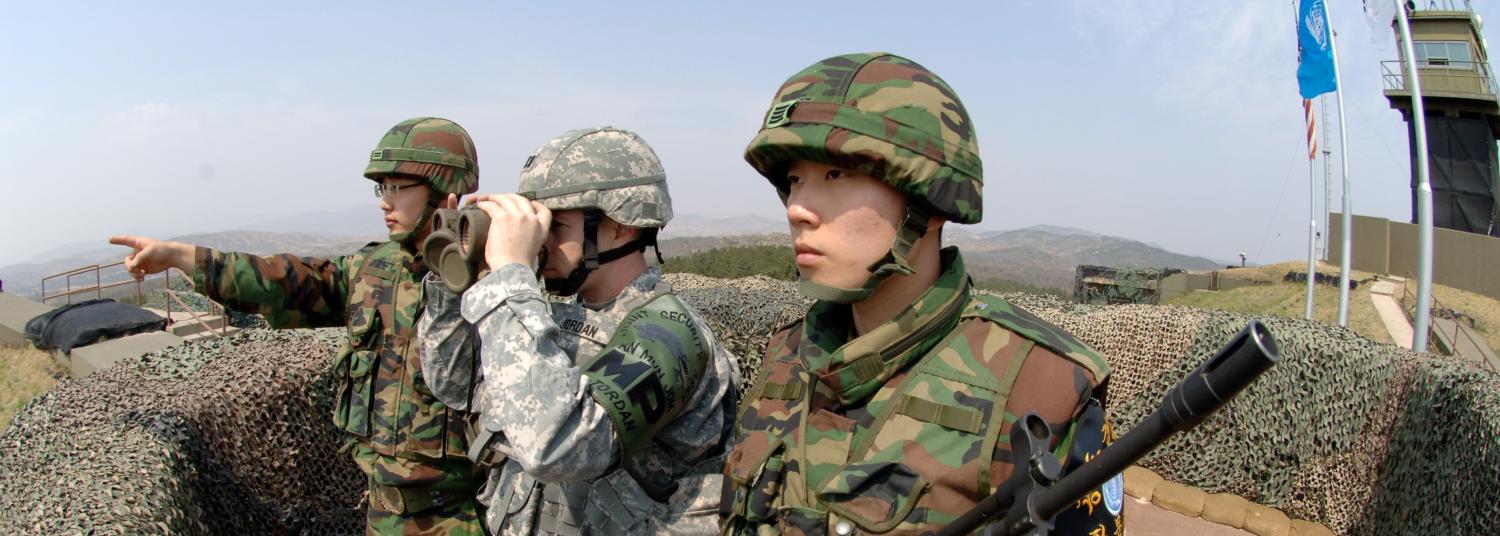Following his recent speech at the Shangri-la Dialogue in Singapore, US Secretary of Defense James Mattis was asked a question about North Korea. This excerpt from his answer should be of interest to Australians, among others:
We obviously work very, very closely with the United Nations Command.
This is not just an American command here, a United Nations Command, and the Sending nations - Sending nations being those that sent troops under the UN Security Council resolution in 1950. Because that war was never ended, those nations are still committed to maintaining the peace on the peninsula.
And so, we work, obviously with them as well, in terms of the military options. But right now, we're doing our very best to exhaust all economic and diplomatic initiatives to get this under control.
Beyond those who focus on security on the Korean Peninsula, it is not widely known that there are three separate command structures for the defence of Korea: US Forces Korea, the Combined Forces Command (under which US and South Korean forces serve jointly in wartime) and the United Nations Command (UNC).
The UNC is a relic of the UN mandate established under Security Council Resolution 84, passed in July 1950. Sixteen 'sending states' assembled under the UN flag contributed forces to defend South Korea against North Korean attack, and later China.
As much of the developing world was still under colonial rule at the outset of the Cold War, the UNC featured a predictable line-up of Western countries, led by the US, UK and its Commonwealth partners Australia, Canada, New Zealand and South Africa. France also sent a sizeable contingent, along with smaller forces from Belgium and Luxembourg.
And yet the UNC might alternatively be considered as the original rainbow coalition-of-the-willing. Colombia, Ethiopia, Turkey, Thailand and the Philippines all committed forces, lending a global legitimacy to the UN action, although the main military heft was supplied by the US and Commonwealth countries. South Korea itself remained outside the UNC.
Australia was among the largest Commonwealth providers of forces across all three armed services. This included the deployment of an aircraft carrier. Around 17,000 Australians fought in Korea, and 340 died there. Australia’s contribution provided political capital in the security relationship with the US; the ANZUS Treaty was itself signed during the Korean war.
In the decades after the Korean War, the UN Command waned in relation to the dominant US and rising South Korean roles in the Peninsula’s defence. President Jimmy Carter tried to scrap it, but it survived.
Now, the UNC is the focus of renewed attention.
The US Commander in South Korea, General Brooks, wants to 'revitalise' it. What this means in practice is still under discussion, but there is a desire to more clearly delineate the UNC among its co-located commands, including a dedicated staff instead of double-hatting officers, along with greater efforts to engage the sending states. The thinking appears to embrace the UNC as a template for coalition building at a time of renewed tensions on the Peninsula over North Korea’s nuclear weapons program. Mattis recently labelled North Korea as the 'most urgent threat' facing the US.
This focus on the UNC has implications for Australia, which maintains a one-star RAAF Air Commodore embedded within USFK headquarters in Seoul, as well as a Group Captain in charge of the UNC (Rear) at Yokota Air Base in Japan (Yokota and several other US bases in Japan are mandated to support the defence of South Korea in wartime). The UNC (Rear) is composed of eight states: Australia, Canada, France, New Zealand, The Philippines, Thailand, Turkey and the UK.
The likelihood of war breaking out between the Koreas should not be exaggerated. The Armistice suffers occasional violations, but it continues to hold, 64 years on. The UNC is sometimes dismissed as being of antiquarian interest. North Korea itself has apparently concluded that President Trump’s warnings amount to bluster. When Mattis talks of military options in relation to the UNC, however, Canberra ought to take notice.

